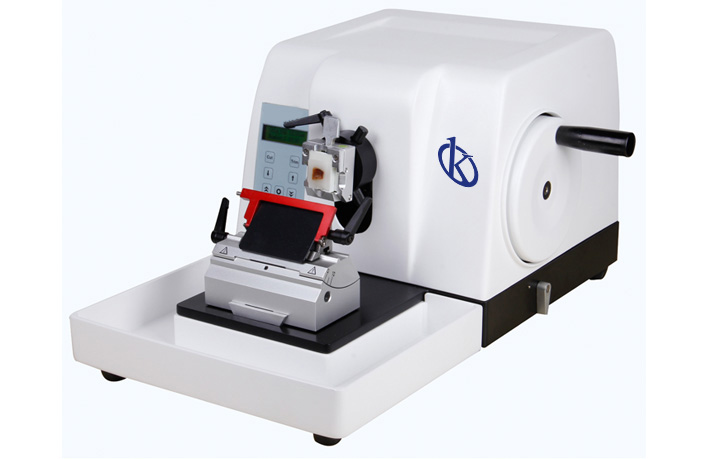In the world of laboratory equipment, precision and reliability are crucial. Two prominent microtomes dominate the market: Kalstein’s Semi-Automatic Detection Microtome YR416-1 and Leica’s RM2245. Each device boasts unique features, aiming to elevate the quality of histological preparations. This article delves into the specifics of both products, providing a detailed comparison to aid in your purchasing decision.
The Semi-Automatic Detection Microtome YR416-1 by Kalstein offers cutting-edge technology designed for precision and ease of use. Its semi-automatic functionality not only increases efficiency but also enhances safety. On the other side, the Leica RM2245, renowned for robust construction and precision, remains a staple in many histology labs. This comparison will shed light on their distinct features, usability, and performance in practical applications.
| Feature | Kalstein YR416-1 | Leica RM2245 |
|---|---|---|
| Automation Level | Semi-Automatic | Manual and Semi-Automatic Options |
| Section Thickness Range | 0.5 – 100 µm | 1 – 60 µm |
| Object Feed | 0.5 µm increments | Manual |
| Safety Features | Advanced Safety Measures | Standard Safety Features |
| Price Range | Competitive | Premium |
How They Work
The Kalstein Semi-Automatic Detection Microtome YR416-1 operates with a semi-automated cutting system, allowing for precision sectioning with minimal user involvement. It features automated trimming and sectioning capabilities, handling delicate samples with care. Safety features ensure user protection during operation, making it both efficient and secure.
Conversely, the Leica RM2245 can be operated manually or using its semi-automatic features, which offers flexibility. Known for its durability, it incorporates a manual crank to control movement and precision for sections, although it may require more user intervention compared to the Kalstein model.
What Is It Used For
The Kalstein YR416-1 microtome is primarily used for preparing thin slices of biological specimens for microscopic examination. It excels in histology and pathology laboratories, facilitating high-throughput sectioning with high precision. Its semi-automatic features streamline the sectioning process, minimizing user fatigue and increasing productivity.
Types
Microtomes come in various types, including rotary, sliding, and ultra-microtomes. The Semi-Automatic Detection Microtome YR416-1 falls under the rotary category, making it suitable for routine and research applications. This contrasts with more traditional manual rotary types, which offer less automation and precision.
Market Price
The market price for microtomes varies significantly based on features and brand. Kalstein’s YR416-1 offers a competitive price, delivering advanced technology and automation without the hefty price tag associated with premium options like the Leica RM2245. Prices generally range from $5,000 to $15,000, depending on the features and level of automation.
Frequently Asked Questions
What are the main benefits of semi-automatic microtomes?
Semi-automatic microtomes provide enhanced precision and efficiency, reducing manual effort and user fatigue. They often come equipped with safety features to protect the user.
How do I maintain a microtome?
Regular cleaning and lubrication are essential. Follow the manufacturer’s guidelines to ensure longevity and accurate performance.
Why choose Kalstein over other brands?
Kalstein combines affordability with advanced features, and the YR416-1 is no exception, offering innovative technology at a competitive price.
Advantages and Disadvantages
Kalstein YR416-1
Advantages: Offers semi-automatic operations for improved precision and ease. Includes cutting-edge safety features, and its competitive pricing provides excellent value for money.
Disadvantages: Being semi-automatic may not appeal to those preferring fully manual control.
Leica RM2245
Advantages: Renowned for its durability and flexibility between manual and semi-automatic operations.
Disadvantages: Higher price point can be prohibitive, and the manual operation might result in user fatigue.
Product Use in the Field
Kalstein’s YR416-1 is designed for high-volume laboratories, where efficiency and precision are paramount. Its features reduce process time significantly. Meanwhile, Leica’s RM2245 is excellent for settings where manual intervention and thorough control over the sectioning process are needed, but at the expense of potentially increased user fatigue.
Recommendations
To maximize longevity and performance, it is crucial to follow regular maintenance schedules and use the device according to manufacturer instructions. Leveraging Kalstein’s intuitive platform for obtaining direct support and service can also enhance user experience. For those seeking efficiency with accessible control, Kalstein’s semi-automatic model may be the right choice.
If you’re seeking a fusion of innovation and quality, you’ve come to the right place. At Kalstein, we offer the luxury of exploring our exclusive catalog of laboratory equipment. We manufacture each device with a level of excellence. Our intuitive and agile online shopping channels are designed for your convenience, ensuring the most affordable prices. Don’t hesitate any longer; we bring science to life, and it is time to be part of our community. https://kalstein.nl/product/semi-automatic-detection-microtome-yr416-1/.

